Items
Site
The Medicine Chest
Is Part Of is exactly
Physics
-
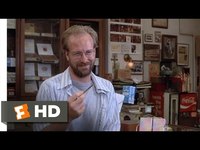
Weighing Smoke
PAUL That’s the man. Well, Raleigh was the person who introduced tobacco in England, and since he was a favourite of the Queen’s – Queen Bess, he used to call her – smoking caught on as a fashion at court. I’m sure Old Bess must have shared a stogie or two with Sir Walter. Once, he made a bet with her that he could measure the weight of smoke. DENNIS You mean, weigh smoke? PAUL Exactly. Weigh smoke. TOMMY You can’t do that. It’s like weighing air. PAUL I admit it’s strange. Almost like weighing someone’s soul. But Sir Walter was a clever guy. First, he took an unsmoked cigar and put it on a balance and weighed it. Then he lit up and smoked the cigar, carefully tapping the ashes into the balance pan. When he was finished, he put the butt into the pan along with the ashes and weighed what was there. Then he subtracted that number from the original weight of the unsmoked cigar. The difference was the weight of the smoke. TOMMY Not bad. That’s the kind of guy we need to take over the Mets. PAUL Oh, he was smart, all right. But not so smart that he didn’t wind up having his head chopped off twenty years later. (Pause) But that’s another story. -
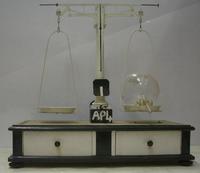
Weighing Air
An example from demonline (UCT Physics Department’s website with descriptions of educational demonstrations). Its descriptions reads: "A spherical flask of about 1 litre is suspended from one arm of a crude chemical balance. It is counterpoised by weights in the other pan, the tap attached to the sphere being open. This gives (roughly) the true weight of the glass. Unhook the sphere from the stirrup, attach the rubber tube from a rotary vacuum pump to the glass tube and evacuate for around 30s. Close tap, and re-attach stirrup. There will now be an upthrust on the flask equal to the weight of air removed, and the weights in the other pan will have to be reduced by about 1.2 g to restore the balance. Open the tap again: the air can be heard rushing into the flask (class must keep quiet), and the flask suddenly descends again". -

Lodestone
An example from demonline (UCT Physics Department’s website with descriptions of educational demonstrations). Its description reads: ‘A lodestone is suspended by a string. Show that it rotates on bringing a magnet near it. Dip it into iron filings and show that it picks them up.’ -
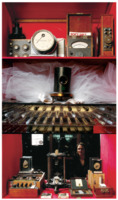
Capitance
"Strategies such as juxtapositioning also served to highlight poetic and emotive qualities in fields not known for encouraging them, as in a cabinet curated by Langerman titled Capitance. This featured a range of instruments from the Physics department used to measure electrical currents (galvanometers, capacitors and Wheatstone bridges); a crystal goniometer measuring crystal face angles and crystal 175 from the crystal collection in Geological Sciences; M.R. Drennan’s models of the human embryo and a wax model of flesh; and a white tutu from the School of Ballet. In combining this selection of scientific instruments with a tutu, Langerman made allowance for the materials to be considered in a more poetic light, inviting the viewer to consider how a grand jeté defies the laws of physics, for example" (Liebenberg 2021: 186). -

Diving the Tacoma Narrows Bridge
"All that debris still remains under the bridge for the most part, and it has become a dive site. It is a very difficult dive site to get to because of the swiftly moving water and the very short period of slack time. Nature in this area has just a tremendous ability to take over. You have a man-made structure like the Tacoma Narrow Bridge that collapsed into the water. Very quickly, the ocean took it over and made it part of the habitat". Extract from the voiceover of trailer for 700 Feet Down (a documentary about the Tacoma Narrows Bridge told through witnesses of the bridge’s 1940 demise as well as intrepid divers exploring a reef of wreckage, ultimately reflecting on how history influences the present) -

The sea
"As I stood there, suddenly, no, not suddenly, but in a sort of driving heave, the whole sea surged, it was not a wave, but a smooth rolling swell that seemed to come up from the deeps, as if something vast down there had stirred itself, and I was lifted briefly and carried a little way toward toward the shore and then set down on my feet as before, as if nothing had happened. And indeed nothing had happened, a momentous nothing, just another of the great world's shrugs of indifferennce (Banville 2005: 26) -

Coda
Metronome, fishing hook, sinker, crimp and laboratory clamp. The fishing sinker supplies a counter weight, which allows ticking to continue even though the metronome is suspended upside down. The weight is however, exercising a force which will inevitably exhaust the metronome spring, causing it to cease functioning. -

About Ed Ricketts
"Just about dusk one day in April 1948 Ed Ricketts stopped work in the laboratory in Cannery Row. He covered his instruments and put away his papers and filing cards. He rolled down the sleeves of his wool shirt and put on the brown coat which was slightly small for him and frayed at the elbows. He wanted a steak for dinner and he knew just the market in New Monterey where he could get a fine one, well hung and tender. He went out into the street that is officially named Ocean View Avenue and is known as Cannery Row. His old car stood at the gutter, a beat-up sedan. The car was tricky and hard to start. He needed a new one but could not afford it at the expense of other things. Ed tinkered away at the primer until the ancient rusty motor coughed and broke into a bronchial chatter which indicated that it was running. Ed meshed the jagged gears and moved away up the street. He turned up the hill where the road crosses the Southern Pacific Railways track. It was almost dark, or rather that kind of mixed light and dark which makes it very difficult to see. Just before the crossing the road takes a sharp climb. Ed shifted to second gear, the noisiest gear, to get up the hill. The sound of his motor and gears blotted out every other sound. A corrugated iron warehouse was on his left, obscuring any sight of the right of way. The Del Monte Express, the evening train from San Francisco, slipped around from behind the warehouse and crashed into the old car. The cow-catcher buckled in the side of the automobile and pushed and ground and mangled it a hundred yards up the track before the train stopped" (Steinbeck 1951: 279). After Ricketts' death in 1948, Steinbeck dropped the species catalogue from the earlier 'The Sea of Cortez' and republished it with a eulogy to his friend added as an afterword. -

Left luggage
St. Pancras Station, London. Suitcases full of holes, handkerchiefs and string sculpture - destroyed by the train pulling out of the station -

Resonance (Greenblatt)
In 'Resonance and Wonder' Greenblatt discusses ‘resonant’ moments in regards to museum displays as “those in which the supposedly contextual objects take on a life of their own and make a claim that rivals that of the object that is formally privileged. A table, a chair, a map – often seemingly placed only to provide a decorative setting for a grand work – become oddly expressive, significant not as a background but as compelling representational practices in themselves. These practices may in turn impinge on the grand work, so that we begin to glimpse a kind of circulation: the cultural practice and social energy implicit in mapmaking is drawn into the aesthetic orbit of a painting, which has itself enabled us to register some of the representational significance of the map” (1991: 22- 23). For him a resonant exhibition often “pulls the viewer away from the celebration of isolated objects and toward a series of implied, only half-visible relationships and questions” (1991: 23). -

Resonance
Image from page 137 of the 'Curiosity CLXXV' catalogue, describing resonance and its application in MRI technology. -

Breath Sculptures
In the exhibition, 'Chest: a botanical ecology', "this cabinet extended the ideas of fragility and fallibility represented by the broken glass laboratory bottle, displaying four ‘breath sculptures’ made by the five individual breaths of children who suffer from asthma: Thaakira Salie (aged 8), Ziyaad Small (aged 10), Blake Leppan (aged 9) and Jessie Allot (aged 11). Working in collaboration with the Allergy Foundation of South Africa and Andre de Jager, UCT’s resident glass blower in the Department of Chemistry, I facilitated a workshop in which the children were taught the practice of blowing glass and then produced their own sculptures by breathing into molten glass. The breath sculptures made by these children were far removed from the functional bespoke glassware usually produced in the workshop for chemical experiments or for those conducted for physics and chemical engineering (A. de Jager, personal communication, 20 August 2018)" (Liebenberg 2021: 263). -

The Tralfamadorians
In Kurt Vonnegut's 'Slaughterhouse-Five', the protagonist Billy, is abducted by aliens and taken to their planet, Tralfamadore. Throughout the novel, Billy imparts what he has learned from the Tralfamadorians, whilst there. In one instance, in a letter to a late night radio station, he writes about their views on time: "The most important thing I learned on Tralfamadore was that when a person dies he only appears to die. He is still very much alive in the past, so it is very silly for people to cry at his funeral. All moments, past, present, and future, always have existed, always will exist. The Tralfamadorians can look at all the different moments just the way we can look at a stretch of the Rocky Mountains, for instance. They can see how permanent all the moments are, and they can look at any moment that interests them. It is just an illusion we have here on Earth that one moment follows another one, like beads in a string, and that once a moment is gone it is gone forever. When a Tralfamadorian sees a corpse, all he thinks is that the dead person is in a bad condition in that particular moment, but that the same person is just fine in plenty of other moments. Now, when I myself hear that someone is dead, I simply shrug and say what the Tralfamadorians say about dead people, which is 'So it goes' " (Vonnegut 1969: 24 - 25). -

Wave
Screengrab of an image search, typing in 'third wave' -

Devils Bridge sketched by Lister
'Devils Bridge' sketched by Lister on his travels through Europe showing a bridge crossing the Gotthard Pass, northern approach, Switzerland. The term 'devil's bridge' is applied to many ancient bridges found primarily in Europe. These were stone or masonry arch bridges and, because they represented a significant technological achievement in ancient architecture, were objects of fascination and stories. The most popular of these featured the Devil, either as the builder of the bridge (relating to the precariousness or impossibility of such a bridge to last or exist in the first place) or as a pact-maker (sharing the necessary knowledge to build the bridge, usually in exchange for the communities souls). The legend attached to the bridge sketched by Lister is of the latter, and was related by Johann Jakob Scheuchzer in 1716. According to Scheuchzer, the people of Uri recruited the Devil for the difficult task of building the bridge. In return for his expertise, the Devil requested the soul of the first thing to pass the bridge. To trick the Devil, the people of Uri sent across a dog by throwing a piece of bread, and the dog was promptly torn to pieces by the Devil. Reference: Scheuchzer, J. , 1747 [1716]. Naturgeschichte des Schweitzerlandes. Vol. 2: 94. -

Perpetuum Mobile (2400KG)
Water, bucket, hydrophone, mist-machine, 2 400kg cement, relay timer, amplifier and cable. Water is set in motion by means of ultrasound (at times amplified by loudspeakers), generating steam that slowly spreads through the exhibition space and envelops sacks of cement whose mass is changed as the exhibition proceeds by the meandering atmospheric humidity. -

Einstein's abstracts
Cibachrome on aluminium. Microscopic magnification of Einstein’s equations from a blackboard that had been preserved in the History of Science Museum in Oxford -

Burrowing
Extract from 'A Child in Time': "Later, in the sorry months and years, Stephen was to make efforts to re-enter this moment, to burrow his way back through the folds between the events, crawl between the covers, and reverse his decision. But time – not necessarily as it is, for who knows that, but as thought constituted it – monomanically forbids second chances" (McEwan 1987: 14). -

Breath of a Physicist
William Blake, 1794, Ancient of Days Inscription: "In his hand, he took the Golden Compasses, prepared in Gods Eternal stone, to circumscribe This Universe, and all created things One foot he center'd, and the other turn'd Round through the vast profundity obscure, And said, thus farr extend, thus far thy bounds, This be thy just circumference, O World" "In the process of realising this work, [Cornelia] Parker facilitated the collaboration of scientists from the physics department with those from its art gallery. She also drew attention to the scientific qualities of the artwork and, through the performative act of igniting a firework display, the symbolism of scientific discovery" (Liebenberg 2021: 31). -

Graphene
"Parker formulated 'Breath of a physicist' while engaging with the academic communities of the University of Manchester in 2015. She worked closely with the scientists of the institution, most notably Kostya Novoselov, who, with Andre Geim, was awarded the Nobel Prize for the discovery of graphene – the world’s thinnest and strongest material. After being inspired by the discovery of a graphite drawing by William Blake ('The ancient of days') in the university’s art collection, Parker facilitated a collaboration between the gallery staff and Novoselov in which he sourced microscopic samples of graphite from the drawing, as well as graphite from drawings by Turner, Constable and Picasso and from a pencil-written letter by Sir Ernest Rutherford (who split the atom in Manchester), which all formed part of the university’s collections. Novoselov produced graphene from these samples, which Parker then used to make her own artwork and a ‘Blake-graphene sensor’, which was activated by the breath of a physicist (Novoselov) and set off a firework display, returning iron meteorite into the Manchester sky on the opening night" (Liebenberg 2021: 31). -

L’Ellipse
In the triple–screen projection 'L’Ellipse' (1998), Pierre Huyghe slowed a jump cut from Wim Wenders’s 1977 film 'The American Friend' and expanded it by adding his own footage of the film’s leading man, Bruno Ganz, now older, acting out a scene that the film itself skips – a walk across a city, from one apartment to another, between important phone calls. -
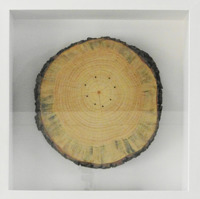
1975 (Invasive Species)
1975 (Invasive Species) stems from a historical and botanical enquiry. In 1975, after attaining independence from Portugal, the civil war broke out in Angola. In that same year, the South African Defense Force under the authorization of Vorster, intervened in the war – an intervention which formed part of an ongoing period of conflict in South African history, known as the Border Wars. From a botanical point of departure, the cluster pine (or Pinus Pinaster) is native to Portugal. In South Africa it is seen as invasive, competing with and replacing indigenous species. The work consists of a cross section of cluster pine used as a target practice unit, into which the artist shot a ring of R4 assault rifle bullets – aiming at tree ring 1975. -
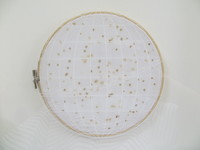
Amelia
"We are on the line 157 337. We will repeat this message. We will repeat this on 6210 kilocycles. Wait." On July 2, 1937 Model 10 Electra 1055 piloted by Amelia Earhart with navigator Fred Noonan took off from Lae Airfield, New Guinea and was never seen again. Earhart's last radio message was estimated to be within 200 miles of her destination Howland Island. Burn holes made with a magnifying glass on a handkerchief which corresponds to the positioning of the stars as observed from the place, date and time Amelia Earhart sent her last broadcast. -
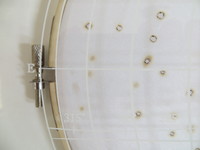
Amelia (detail)
"We are on the line 157 337. We will repeat this message. We will repeat this on 6210 kilocycles. Wait." On July 2, 1937 Model 10 Electra 1055 piloted by Amelia Earhart with navigator Fred Noonan took off from Lae Airfield, New Guinea and was never seen again. Earhart's last radio message was estimated to be within 200 miles of her destination Howland Island. Burn holes made with a magnifying glass on a handkerchief which corresponds to the positioning of the stars as observed from the place, date and time Amelia Earhart sent her last broadcast. -
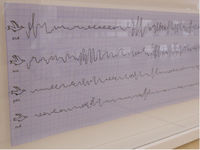
The Lost Boys
After they left Neverland, Mr and Mrs Darling adopted the Lost Boys. Before they had attended school a week they saw what goats they had been not to remain on the island; but it was too late, and they settled down to being as ordinary as “you or me or Jenkins minor” (Barrie 1989: 180). It is sad to say that the power to fly gradually left them. “At first Nana tied their feet to the bedposts so that they should not fly away in the night; and one of their diversions by day was to pretend to fall off buses; but by and by they ceased to tug at their bonds in bed, and they found that they hurt themselves when they let go of the bus. In time they could not even fly after their hats. Want of practice, they called it; but what it really meant was they no longer believed” ( Barrie 1989: 180-181). -
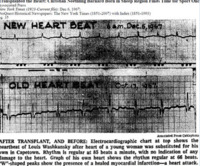
Electrocardiograph of first heart transplant
“The ventricular peaks would shoot up as in wild flight, and their intermediate planes would begin to jumble against one another like the sudden crashing of cars on a freight-train. The heart’s beautiful symmetry would then be reduced to an erratic green line of wild jerks until it entered the final isoelectric phase resembling a sawtooth – jagged lines of the heart seeking to rise like a dying bird, fluttering upward, only to fall once again onto its flat plane of death” (Barnard in Young 2002: 79-80). -

SP-368 Biomedical Results of Apollo
Electrocardiograph signal received at Mission Control during various periods of the Apollo 11 mission -
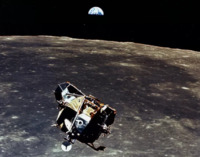
Moon landing
"FIZZY LIFTING DRINKS, it said on the next door. ‘Oh, those are fabulous!’ cried Mr Wonka. ‘They fill you with bubbles, and the bubbles are full of a special kind of gas, and this gas is so terrifically lifting that it lifts you right off the ground just like a balloon, and up you go until your head hits the ceiling – and there you stay.’ ‘But how do you come down again?’ asked little Charlie. ‘You do a burp, of course,’ said Mr Wonka. ‘You do a great big long rude burp, and up comes the gas and down comes you! But don’t drink it outdoors! There’s no knowing how high up you’ll be carried if you do that. I gave some to an old Oompa-Loompa once out in the backyard and he went up and up and disappeared out of sight! It was very sad. I never saw him again.’ ‘He should have burped,’ Charlie said. ‘Of course he should have burped,’ said Mr Wonka. ‘I stood there shouting, “Burp, you silly ass, burp, or you’ll never come down again!” But he didn’t or couldn’t or wouldn’t, I don’t know which. Maybe he was too polite. He must be on the moon by now’” (Dahl 1974: 95). -
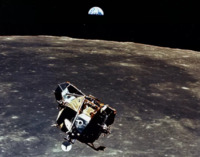
The Eagle has landed (Apollo 11 Lunar Module Ascent Stage Photographed from Command Module)
The Apollo 11 Lunar Module ascent stage, with Astronauts Neil A. Armstrong and Edwin E. Aldrin Jr. aboard, is photographed from the Command and Service Modules (CSM) during rendezvous in lunar orbit. The Lunar Module (LM) was making its docking approach to the CSM. Astronaut Michael Collins remained with the CSM in lunar orbit while the other two crewmen explored the lunar surface. The large, dark-colored area in the background is Smyth's Sea, centered at 85 degrees east longitude and 2 degrees south latitude on the lunar surface (nearside). This view looks west. The Earth rises above the lunar horizon. -

Resonance
Demonstration of sympathetic vibration using the optical (flame) microphone -

The Tacoma Narrows Bridge
The old Tacoma Narrows bridge was named Galloping Gertie because it vibrated rather strongly whenever there was a little wind due to resonance, the property which most objects have, of vibrating more strongly when exposed to an external force which is itself vibrating at the object's natural frequency. Crossing Gertie was actually quite a popular thing to do, similar to riding a roller-coaster. On November 7, 1940, things changed for the worse however. It was a day of rather high winds which caused Gertie to take on a 30-hertz transverse vibration with an amplitude of 1½ feet. This developed into a twisting motion of about 14 hertz, which then tore the bridge in two. The only victim of the disaster was a three-legged Cocker Spaniel, Tubby, left in the back seat of a lone car abandoned on the bridge. -
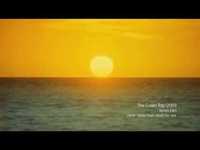
The Green Ray (Jules Verne)
"At last only a faint rim of gold skimmed the surface of the sea. 'The Green Ray! the Green Ray!' cried in one breath the brothers, Dame Bess and Partridge, whose eyes for one second had revelled in the incomparable tint of liquid jade. Oliver and Helena alone had missed the phenomenon which had at last appeared after so many fruitless observations. Just as the sun was shooting its last ray into space their eyes met, and all else was forgotten in that glance. But Helena had caught the black ray, shining from the young man's eyes, and Oliver the blue ray beaming from hers. The sun had gone down, and neither Oliver nor Helena had seen the Green Ray" (Verne 1883:136). -

The Green Ray (Tacita Dean)
"This is really interesting, because I filmed it on this beach in Madagascar, and there was this couple who were hanging around. They didn’t see the green ray, and they’d videotaped the sunset to document it. Then they replayed their video to me for proof that it wasn’t there. But I was absolutely convinced that I had seen it, so it had to be on my film, which was optical and analog. When I got the film back, it was very, very faint, and I had to really push it to get more color in the film, to bring out the green ray. But it’s definitely there. It’s not a fiction. Some people think the green ray is an illusion, but it’s not" (Dean in Eugenides 2006). -

The Green Ray (Jay Gatsby)
“Gatsby believed in the green light, The orgiastic future that year by year recedes before us. It eludes us then, but that’s no matter – to-morrow we will run faster, stretch out our arms further... And one fine morning – So we beat on, boats against the current, borne back ceaselessly into the past” (Fitzgerald 1983: 188). -

The Curious Case Of Benjamin Button


